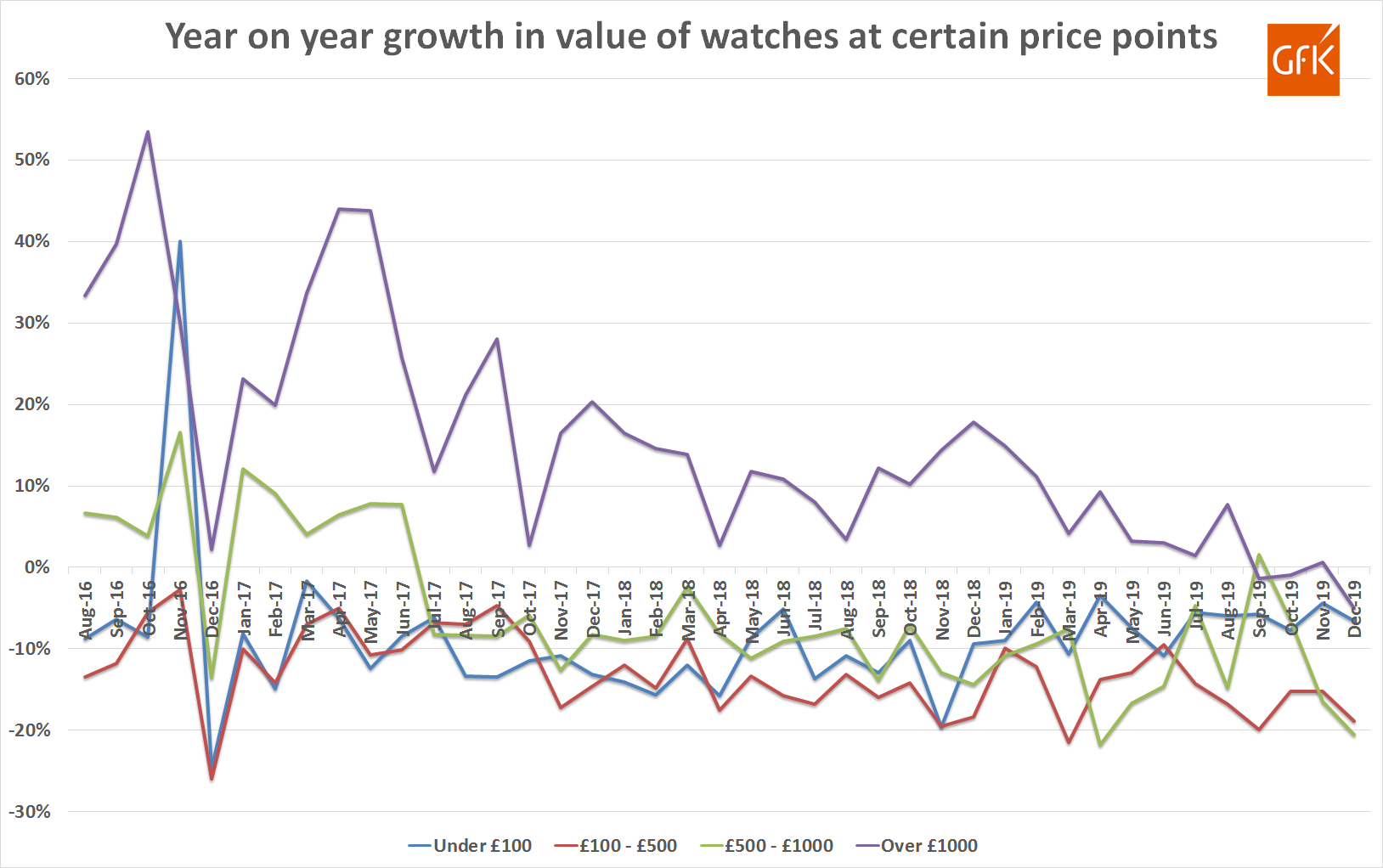Wrist watch value sales fell by -8.5% in December against the same month in 2018, bringing the market into annualised decline for the first time since GfK began tracking sales in Great Britain in 2008, writes Paul Mitchell, senior client insight director at GfK.
The decline in the run up to Christmas is all the more notable as, by the end of November, sales for the year were flat; the long period of buoyant growth which followed the EU referendum had slowed and it appeared that sales for the calendar year would show minimal growth, or perhaps a slight fall. However, a sharp decline in the final month of the year meant that the final twelve-month picture was a -1.2% drop.
The December decline was seen in both online and traditional bricks and mortar sales. The former fell by -7.8% in value in December, with resulting annual sales down -4.2%, indicating that what was previously a potential growth area for the market, if the offering was right, is now as challenging as high street retail is for all but a handful of brands.
As in November, London saw the steepest declines. Value returns in the capital were down -14.4% in December, with the decline measured at -7.0% for the full year. In contrast to this, sales in the rest of GB fell -4.9% in December and remained positive over the year, at +4.5%.
Whilst market value was sustained over the past two years by the luxury market, growth in this sector is now evaporating fast. Whilst value for the market over £1,000 remains positive for the full year, at +3.1%, sales in December came in at -5.0%. This is alongside the sustained long-term decline for lower price points, adding fuel to the fire of lower volume sales and limited value opportunities.
Interestingly, historical data for the last few years has clearly shown that the gents market, when compared to ladies watches, has been the stronger performer. However, in December, the decline was equal, with gents watches falling by -10.8% in value and ladies watches being down -10.0%.
In the face of the lower sales in December and over the year, we need to consider what impact other sectors are having on wrist watches. There is evidence that consumers are directing their gifting spend to other areas, whether they are experience driven (think vouchers offering a range of activities), or whether they are technology-led, either telecoms, smart home, gaming or, particularly, from wearables.
When we look at this last market, volume sales tracked by GfK are up 13.7% (not including Apple stores) over the year. Of this, most of the growth is coming from Smartwatches with both these and Health and Fitness Trackers recording notable seasonal uplifts from November onwards.
It’s clear that the traditional wrist watch market is facing a number of challenges, but it should be remembered that sales in Great Britain remain in the region of £1.5 billion and within such an extensive and wide-ranging market, a lot of success stories are being generated. Whilst change is inevitable and success cannot be guaranteed, opportunities do remain.
 Contributed by Paul Mitchell, Senior Client Insight Director at GfK. paul.mitchell@gfk.com / +44 207 890 9045 / www.gfk.com/uk / www.twitter.com/gfk
Contributed by Paul Mitchell, Senior Client Insight Director at GfK. paul.mitchell@gfk.com / +44 207 890 9045 / www.gfk.com/uk / www.twitter.com/gfk

